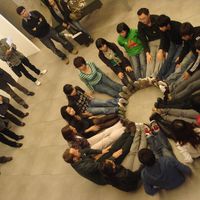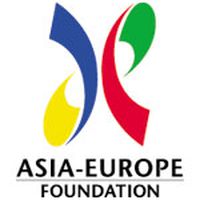Between art and environment: a selection of case studies
 As part of the Connect2Culture Art & Environment programme, the Department of Cultural Exchange at the Asia-Europe Foundation commissioned a research to investigate good practices connecting the arts to initiatives tackling environmental sustainability issues in a number of Asian countries. Titled Linking the Arts to Environment and Sustainable Development, the research project documented case studies that can not only provide inspiration for networking and collaboration between Asia and Europe but also aid policy making and planning.
As part of the Connect2Culture Art & Environment programme, the Department of Cultural Exchange at the Asia-Europe Foundation commissioned a research to investigate good practices connecting the arts to initiatives tackling environmental sustainability issues in a number of Asian countries. Titled Linking the Arts to Environment and Sustainable Development, the research project documented case studies that can not only provide inspiration for networking and collaboration between Asia and Europe but also aid policy making and planning.[caption id="attachment_19794" align="alignnone" width="560" caption="A child participating in representing an emotional-spatial map of the neighbourhood. Image courtesy of Katte Project co-organised by Maraa, a media collective and Salon Emmer, a dance collective"]
The projects researched ranged from creative interventions, public art initiatives, networks, seminars, training, research and documentation projects. ASEF was particularly interested in examples that went beyond merely employing the arts as tools for information dissemination and sought initiatives that envisaged art as a catalyst to stimulate discussion and foster change by posing pertinent questions.
The research highlighted initiatives from:
- India
- Myanmar
- Thailand
- Laos
- Cambodia
- Vietnam
- Malaysia
- Singapore
- Mongolia
Environmental conservation and sustainable development are among the key challenges faced by countries and communities across the world. Since the United Nations Conference on Environment and Development (also known as the Earth Summit) in Rio de Janeiro in 1992, civil society stakeholders have become increasingly active, alongside governments, in the global dialogue on environmental issues. More recently, the culture sector has begun to explore and engage with pressing issues of environmental sustainability.
In this global context, local researchers examined initiatives by the cultural sector as well as by civil society organisations working on environmental issues. These investigations were conducted in two phases. The first phase consisted of a broad study which mapped initiatives within a country while the second phase delved deeper into selected initiatives. The researchers interviewed leaders of these initiatives in order to explore the issues and themes further. The case studies took into consideration elements such as the sustainability of the projects as well as the importance of audience development.
Director Marc Schmitz of the Land Art Biennial in Mongolia stated about their initiative: “It was about a new understanding of environment, face nature as alive, and discussions about art as well.” The role of art in questioning our relationship with the environment and the sustainability of our lifestyles will only increase in the coming years and as such these case studies provide interesting models that transcend national boundaries.
You can download this ASEF-commissioned research here.
You can also find highlights of the research on culture360.org:
- Between art and environment: a Thailand Case Study
- Between art and environment: a Mongolian case study
- Between art and environment: an Indian case study
- Between art and environment: a Malaysian case study
- Between art and environment: a Singapore case study
This research was part of the Connect2Culture Art and Environment Programme and was commissioned in conjunction with the dossier: Arts. Environment. Sustainability. How can Culture Make a Difference?.
Similar content
06 Mar 2012
posted on
28 Sep 2011
By Kerrine Goh
10 Jan 2012
21 Feb 2012
posted on
17 Apr 2010
08 Feb 2012





